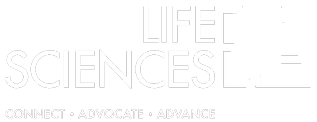Self-insured employers increasingly are testing new plan designs and tougher negotiation tactics with providers in hopes of discovering new and better ways to tamp down health care costs.
For instance, companies are beginning to adopt the “value-based” model in hopes of keeping small health issues from swelling into major catastrophes.
In a recent online post by SmartHR Manager, Gary Rost, executive director of the Savannah Business Group, noted that self-insured companies that want to shift to a value-based plan — in which treatments and procedures are analyzed with effectiveness and cost in mind — must tackle three major tasks:
1. Find and purchase from the high-performing medical provider in their area
2. Design a benefit that will steer their employees to that provider
3. Emphasize preventive care so chronic conditions do not become costly
The first step for employers, Rost said, is to examine their current plan and determine areas of failure. Once data are gathered on who is using what services (and how they’re using them), employers can work on building the best network and designing incentives that will guide workers to providers who understand the value-based philosophy and will deliver the best care at the best price.
Beyond the plan design, self-insured employers can take a number of other steps to make their health plan better, according to Karrie Andes, a senior benefits manager for PGi. In a recent article forEmployee Benefit News, Andes offers a number of tips to help self-funded companies secure the best plan, including:
- Try to negotiate rates upfront for two or three years
- Be aware of any limits on claim audits
- Explore savings by carving out disease management, pharmacy benefits and other features
- Look for a transparent pharmacy model, which allows the pharmacy benefit manager to pass full rebates to your company
Although managing a self-funded plan can be a challenge, the concept has its benefits, according to a recent report by Kaiser Health News. Self-funding can offer significant savings for companies by reducing administrative costs and allowing them to offer a single plan across state lines, the report noted.
While the self-funded model is not for every company, the number of larger employers that have opted to self-insure has grown significantly over the past decade. According to data from the Employee Benefit Research Institute in the KHN report, 68.5 percent of employers with 50 or more workers were self-insured in 2011, compared with 57.8 percent in 2001. However, the number of smaller employers (fewer than 50 workers) who opt for self-funding actually dipped during that time period (10.8 percent in 2011, compared with 12 percent in 2001).




